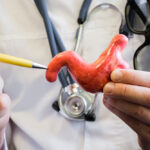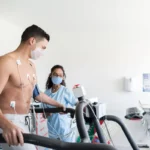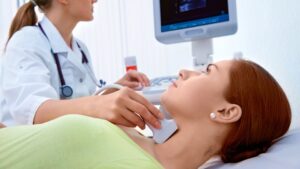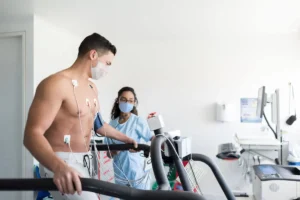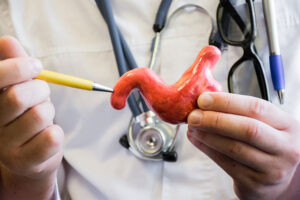Hypermobility Syndrome
Physical Therapy

Hypermobility Syndrome
Hypermobility is a condition that causes increased range of motion in joints. The joints of hypermobile individuals are more flexible and loose compared to normal. While this condition often does not cause any complaints, some people may have hypermobility syndrome that causes various complaints such as pain. Patients with late diagnosis may become anxious and depressed.
As a result of faulty production of collagen, which is the structural protein of connective tissue, collagen fibrils in hypermobile individuals are thinner and more irregular compared to normal individuals. This condition leads to joint wear and predisposition to soft tissue injuries.
It is seen in 10-20% of the population and 3 times more frequently in women. Pain is the most common complaint. Since complaints are related to activity, they tend to occur later in the day. There is often widespread and chronic pain complaint. Symptoms usually begin in childhood and continue into adulthood. Repetitive microtraumas make pain receptors sensitive, causing pain to become prominent. Pain can be in one or several joints, but is often widespread and symmetrical. Joint sounds and swelling complaints may accompany. There are no specific findings in rheumatological blood tests. There is no morning stiffness. Swelling that can be seen in joints occurs due to loading and regresses quickly with rest. Since no cause can be found to explain the complaints, it is usually thought that these cases have psychological disorders!
Diagnosis
- The Beighton score is used to assess the presence of hypermobility in individuals. Patients are evaluated based on the maneuvers they can perform, with each maneuver scored as 1 point. Those scoring 4 and above out of 9 points are considered hypermobile.
- Being able to touch palms to the floor without bending knees (1 point)
- Hyperextension of elbows more than 10 degrees (1 point for each side)
- Hyperextension of knees more than 10 degrees (1 point for each side)
- Touching thumb to forearm (1 point for each side)
- Hyperextension of little finger more than 90 degrees (1 point for each side)
Treatment
- Education
- Activity modification (adaptation to work and daily life)
- Appropriate exercise program for the patient (stretching – strengthening – proprioceptive)
- Current (acute) and chronic pain treatment
It is necessary to avoid postures that will damage joints. Appropriate activity, sports and job selection is important. Joint stabilization exercises for imbalance and weakness in muscles around hypermobile joints, and exercises that increase proprioception should be applied. Frequency and intensity should be adjusted according to the patient. Patients who exercise have a higher rate of symptom improvement compared to those who do not. Random exercises can be harmful. Excessive stretching exercises should be avoided! Swimming, pilates, and some forms of yoga are recommended.
Clinicians dealing with this subject believe that as awareness of the disease increases, more patients with non-specific musculoskeletal complaints can be diagnosed with hypermobility.
How Is the Degree of Hypermobility Measured?
Within the scope of the Beighton score, the degree of hypermobility can be measured based on which movements individuals can perform. For this, it is necessary to measure whether the following movements can or cannot be performed by the person. 1 point is given for each movement that can be performed, and the sum of the points determines the person’s degree of hypermobility. All these scores allow for the assessment of hypermobility degree and Beighton score in the person. Often hypermobility and Beighton score decrease with advancing age.
Problems Accompanying Hypermobility
- It is observed that people with this syndrome also have different complaints outside the joints.
- Mitral valve prolapse
- Uterine prolapse
- Hernias
- Gastroesophageal reflux
Hypermobility and EDS
Whether people with this syndrome also have EDS is decided by considering the Brighton criteria. We can list these criteria as follows:
Major Criteria
- Brighton score being 4 and above
- Joint pain lasting more than 3 months and affecting at least 4 or more joints
Minor Criteria
- Brighton score being between 1 and 3
- Back pain or pain lasting more than 3 months in 1-3 joints
- Multiple dislocations in one joint or dislocation in multiple joints
- Problems in at least 3 or more soft tissues
- Excessive skin elasticity
- Skin cracks, abnormal scarring, or very thin skin
- Myopia and droopy eyelids
- Having a long and thin body structure
- Mitral valve prolapse
Requirements for Diagnosis
- Presence of 2 major criteria
- Presence of 1 major and 2 minor criteria
- Presence of 4 minor criteria
- Presence of 2 minor criteria and having EDS at the same time
Benign Hypermobility
As known, Beighton scores are considered in the evaluation of hypermobility. The highest score is 9. If there is pain lasting more than 3 months in at least 4 joints along with 4 Beighton points, benign hypermobility can be mentioned. In this case, benign hypermobility treatment is applied to the patient. This treatment includes:
- Analgesics
- Activities to reduce pain
- Physical therapy to strengthen joints
What Are the Symptoms of Hypermobility?
- Muscle pain
- Joint pain
- Joint swelling
- Soft tissue rheumatism
- Jaw joint pain
- Sounds from jaw joints
- Early arthrosis
- Back pain
- Herniated disc
- Spinal stenosis
All of these symptoms may occur in one person, or only a few may be seen. New symptoms may also appear over time in people with hypermobility disorder.
What Should People with Hypermobility Avoid?
- Activities involving running, jumping and hopping movements should be avoided
- Sports involving close contact such as basketball and football should be avoided
- Traction should not be applied to joints
- Body stretching exercises should be done for short periods without excessive strain
- Weights should not be lifted
- Movements that strain joints such as pushing or pulling should be avoided
- Movements that anatomically strain the body should not be performed
- If weight training is necessary, it should be done with light weights and many repetitions, or with heavy weights and minimal repetitions
- If exercise is necessary, it should be done in water such as in a pool
- Walks should not be done at very fast pace
- Movements like yoga and pilates should be done under the supervision of a physiotherapist
- Exercises should not be done daily, a period of at least every 2 days should be determined
- Exercises recommended by physiotherapists and resulting from hypermobility must be done regularly





